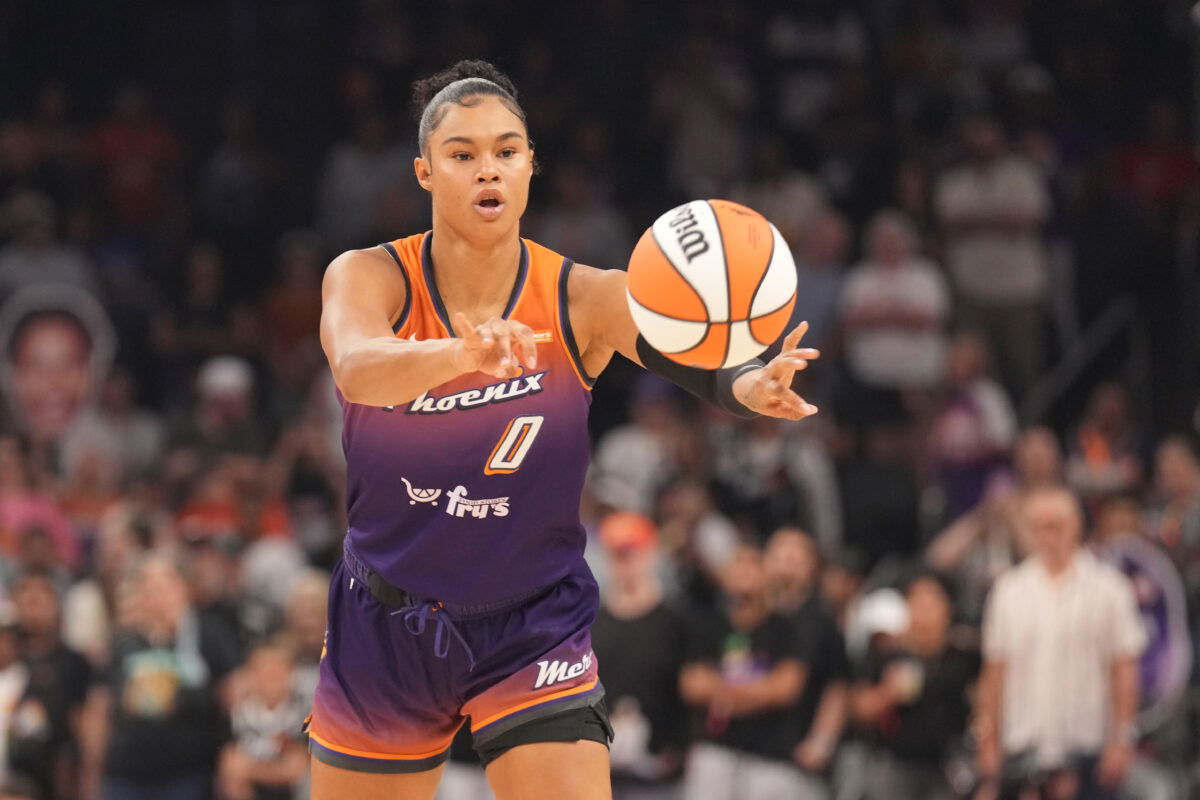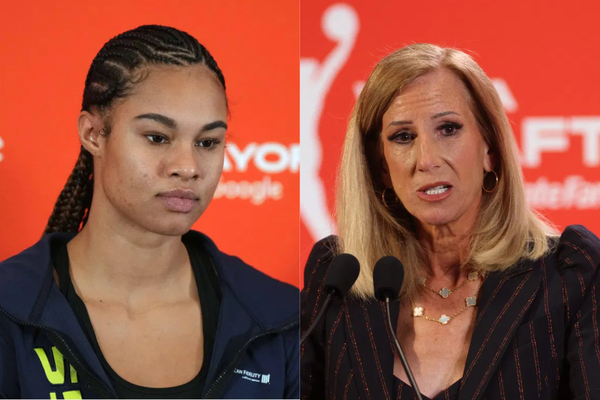
Imago
Jun 27, 2025; Phoenix, Arizona, USA; Phoenix Mercury forward Satou Sabally (0) passes the ball against the New York Liberty during the first half at Footprint Center. Mandatory Credit: Joe Camporeale-Imagn Images

Imago
Jun 27, 2025; Phoenix, Arizona, USA; Phoenix Mercury forward Satou Sabally (0) passes the ball against the New York Liberty during the first half at Footprint Center. Mandatory Credit: Joe Camporeale-Imagn Images
Ever since the arrival of the 2024 rookie class, the W’s popularity has been at its peak, with skyrocketing viewership and attendance. So, the league wasted no time and introduced the Golden State Valkyries as an expansion team—the first since the Atlanta Dream’s inaugural season in 2008. And it’s just one year later, and once again the league is expanding—this time, welcoming three new teams. Growth, right? But not everyone is happy with the idea of expansion.
Watch What’s Trending Now!
One of them is CBA Co-Chair and Phoenix Mercury forward Satou Sabally. When she was asked about her thoughts on the recent announcement of the three newest expansion teams, she gave a blunt response: “We got a proposal from the league, which was honestly a slap in the face,” she expressed.
That might sound harsh to someone genuinely rooting for the W’s growth, but Sabally has her reasons. Yes, the league is expanding fast, with Portland and Toronto joining in 2026, followed by Cleveland in 2028, Detroit in 2029, and Philadelphia in 2030. But while the league keeps adding franchises, it’s not necessarily taking the steps to ensure that the players already in the league feel supported and satisfied.
ADVERTISEMENT
When asked about WNBA expansion, Satou Sabally said the proposal the union received from league was a “slap in the face.”
“Maybe focus on the teams also that find excuses continuously to lack investment into their players before we focus on adding more…”#WNBA pic.twitter.com/KlWogZGYUN
— Desert Wave Media (@DesertWaveCo) July 1, 2025
That’s why Sabally’s response makes sense. As part of the WNBPA, the union representing the voices and needs of the players, she’s been actively involved in ongoing discussions around the new Collective Bargaining Agreement, which focuses on key issues like player salaries, revenue sharing, and family planning benefits.
And from what it sounds like, via Sabally herself, the negotiations aren’t going smoothly. “We really have to put our emphasis on the players that are in the league right now… I love to see the league growing… but how cool would it also be to have like a little bit of expansion on the rosters?” she said, referring to the desire for expanded roster sizes, which currently sit at a maximum of 12 players.
ADVERTISEMENT
But here’s where the friction comes in. W’s Commissioner has argued that expanding rosters isn’t financially viable, claiming that adding more players doesn’t generate the same revenue as launching new teams. So, clearly, there’s an impasse.
And it’s not just Sabally fighting to be heard. Just hours before taking on the Minnesota Lynx in the Commissioner’s Cup Final, Sophie Cunningham was asked the same question, and her response echoed a similar sentiment. “But I also think you want to listen to your players, too. Where do they want to play? Where are they going to get excited to play and draw fans? And I do think that Miami would have been a great one. Everyone loves Florida. Nashville is an amazing city. Kansas City—amazing opportunity. There’s a huge arena downtown that no one’s using. And I think that the women’s soccer league is showing that people draw,” she added.
ADVERTISEMENT
While Sophie’s response was slightly different, voicing disappointment with the selection of expansion cities rather than the concept of expansion itself, she, too, emphasized, “you want to listen to your players.” But is the W actually listening to its players?
The W’s rapid growth is outpacing player support!
The W’s expansion buzz is louder than ever, but so are the very real challenges that come with it. No doubt, adding teams may boost visibility and fan engagement, but the league is already dealing with a relatively shallow talent pool. Expanding from 13 to 18 teams by 2030 would stretch rosters from 144 to 216 players without a solid developmental system in place.
ADVERTISEMENT
This could certainly lead to diluted talent, increased injury risks, and a weaker product on the floor, especially for new franchises that often struggle in their early years. Then there’s financial strain, another pressing concern. Even with rising popularity and a massive $2.2 billion media deal, the league reportedly lost around $40 million in 2024.

ADVERTISEMENT
As expansion increases operating costs, salaries, staff, and travel, without guaranteeing equivalent returns, adding more franchises also divides revenue shares more thinly, which could hurt smaller-market teams. On top of that, the W still relies heavily on commercial flights, so expanding geographically could worsen travel fatigue, scheduling stress, and player safety concerns.
Top Stories
NFL Announces Decision on Rashee Rice Incident Amid Disturbing Allegations From Ex-GF

NFL Coach of 62 Years Retires Before Todd Bowles & Buccaneers Turn Coaching Room Upside Down With 5 Firings

Brad Keselowski Snuffs Out Retirement Rumors Despite Prolonged Winless Streak

NASCAR Rumor: Fans Left Baffled as Insider Leaks ‘New Championship Format’ Weeks Before 2026 Season

Two Years After Sydney McLaughlin-Levrone, Quincy Wilson and Co. Make History With New Balance Announcement

Commanders Release Statement on Marshon Lattimore as CB Faces Charges After Arrest

Unless infrastructure catches up, charter flights and improved logistics must become a priority. That’s why many players and analysts have suggested expanding current rosters and development pathways first, possibly pausing expansion after 16 teams for stability. So, what do you think? Is the W still listening to its players?
ADVERTISEMENT
ADVERTISEMENT
ADVERTISEMENT
ADVERTISEMENT

